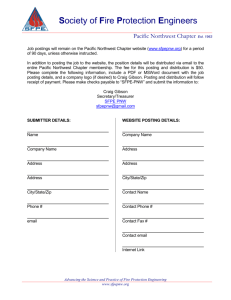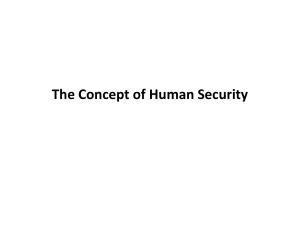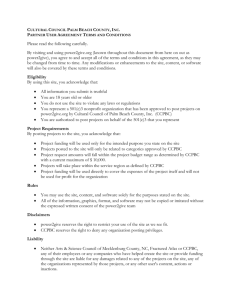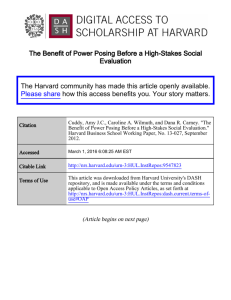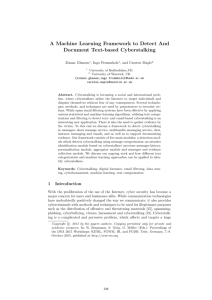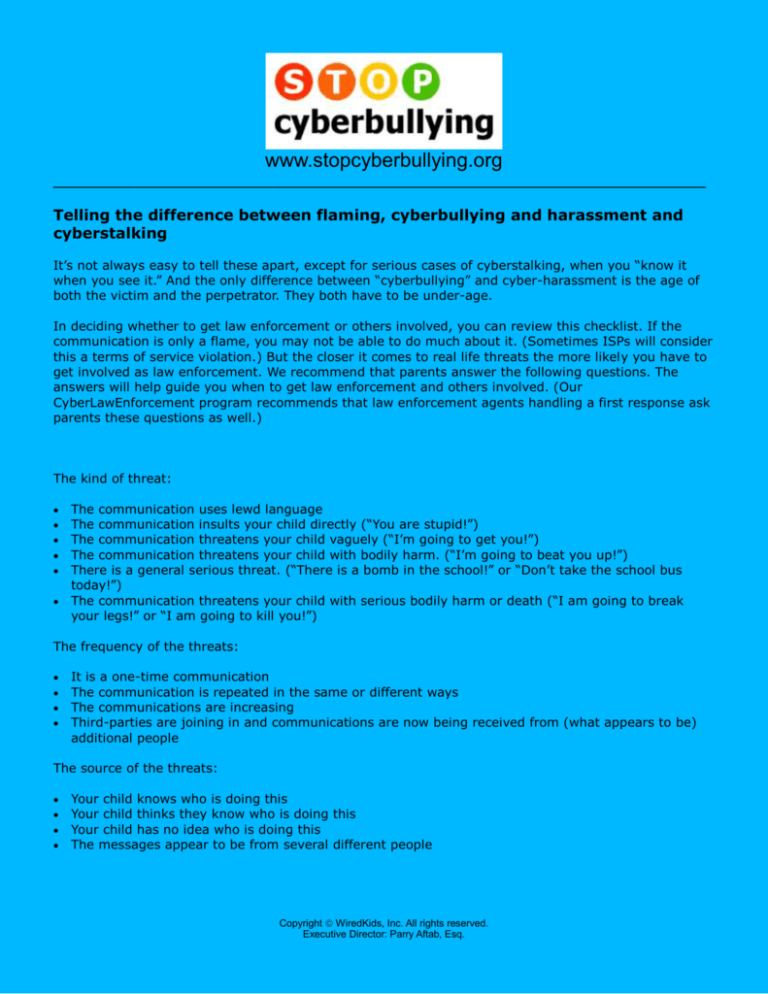
www.stopcyberbullying.org
______________________________________________________________________________
Telling the difference between flaming, cyberbullying and harassment and
cyberstalking
It’s not always easy to tell these apart, except for serious cases of cyberstalking, when you “know it
when you see it.” And the only difference between “cyberbullying” and cyber-harassment is the age of
both the victim and the perpetrator. They both have to be under-age.
In deciding whether to get law enforcement or others involved, you can review this checklist. If the
communication is only a flame, you may not be able to do much about it. (Sometimes ISPs will consider
this a terms of service violation.) But the closer it comes to real life threats the more likely you have to
get involved as law enforcement. We recommend that parents answer the following questions. The
answers will help guide you when to get law enforcement and others involved. (Our
CyberLawEnforcement program recommends that law enforcement agents handling a first response ask
parents these questions as well.)
The kind of threat:
The communication uses lewd language
The communication insults your child directly (“You are stupid!”)
The communication threatens your child vaguely (“I’m going to get you!”)
The communication threatens your child with bodily harm. (“I’m going to beat you up!”)
There is a general serious threat. (“There is a bomb in the school!” or “Don’t take the school bus
today!”)
The communication threatens your child with serious bodily harm or death (“I am going to break
your legs!” or “I am going to kill you!”)
The frequency of the threats:
It is a one-time communication
The communication is repeated in the same or different ways
The communications are increasing
Third-parties are joining in and communications are now being received from (what appears to be)
additional people
The source of the threats:
Your child knows who is doing this
Your child thinks they know who is doing this
Your child has no idea who is doing this
The messages appear to be from several different people
Copyright WiredKids, Inc. All rights reserved.
Executive Director: Parry Aftab, Esq.
The nature of the threats:
Repeated e-mails or IMs
Following the child around online, into chat rooms, favorite Web sites, etc.
Building fake profiles, Web sites or posing as your child’s e-mail or IM
Planting statements to provoke third-party stalking and harassment
Signing your child up for porn sites and e-mailing lists and junk e-mail and IM.
Breaking in to their accounts online
Stealing or otherwise accessing their passwords
Posting images of the child online (taken from any source, including video and photo phones)
Posting real or doctored sexual images of the child online
Sharing personal information about the child
Sharing intimate information about the child (sexual, special problems, etc.)
Sharing contact information about the child coupled with a sexual solicitation (“for a good time call
…” or “I am interested in [fill in the blank] sex…”)
Reporting the child for real or provoked terms of service violations (“notify wars” or “warning wars”)
Encouraging that others share their top ten “hit lists,” or ugly lists, or slut lists online and including
your child on that list.
Posting and encouraging others to post nasty comments on your child’s blog.
Hacking your child’s computer and sending your child malicious codes.
Sending threats to others (like the president of the United States) or attacking others while posing as
your child.
Copying others on your child’s private e-mail and IM communications.
Posting bad reviews or feedback on your child without cause.
Registering your child’s name and setting up a bash Web site or profile.
Posting rude or provocative comments while posing as your child (such as insulting racial minorities
at a Web site devoted to that racial minority).
Sending spam or malware to others while posing as your child.
Breaking the rules of a Web site or service while posing as your child.
Setting up a vote for site (like “hot or not?”) designed to embarrass or humiliate your child.
Masquerading as your child for any purpose.
Posting your child’s text-messaging address or cell phone number online to encourage abuse and
increase your child’s text-messaging or cell phone charges.
Launching a denial of service attack on your child’s Web site
Sending “jokes” or rude things about your child to others or mailing lists.
The more repeated the communications are, the greater the threats (or enlarging this to include thirdparties) and the more dangerous the methods, the more likely law enforcement or legal process needs
to be used. If personal contact information is being shared online, this must be treated very seriously.
If the child thinks they know who is doing this, that may either make this more serious, or less. But
once third-parties are involved (hate groups, sexually-deviant groups, etc.) it makes no difference if the
person who started this is a young seven year old doing it for a laugh. It escalates quickly and can be
dangerous.
Copyright WiredKids, Inc. All rights reserved.
Executive Director: Parry Aftab, Esq.





